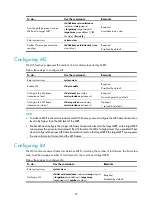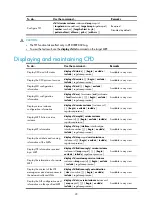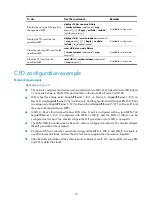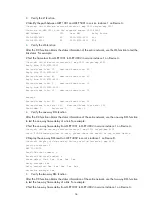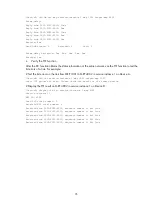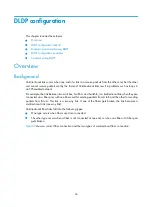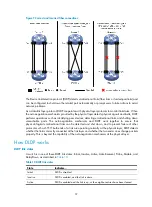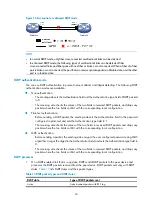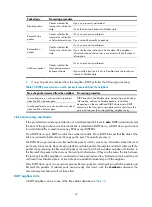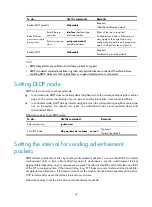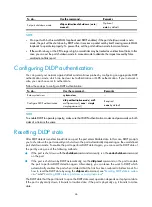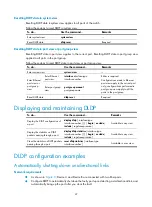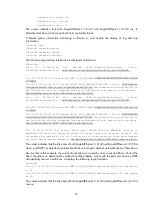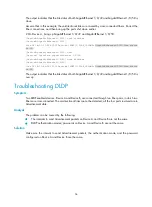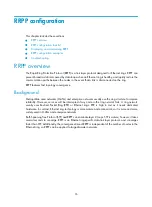
41
DLDP state
Type of DLDP packets sent
Advertisement
Normal Advertisement packet
Probe Probe
packet
Disable Disable
packet
and
then RecoverProbe packet
NOTE:
A switch sends Flush packets when it transits to Initial state from Active, Advertisement, Probe, or
DelayDown state but does not send them when it transits to the Initial state from Inactive or Disable state.
2.
A received DLDP packet is processed with the following methods.
•
In any of the three authentication modes, the packet is dropped if it fails to pass the authentication.
•
The packet is dropped if the setting of the interval to send Advertisement packets it carries conflicts
with the corresponding local setting.
•
Other processes are as shown in
.
Table 14
Procedures for processing different types of DLDP packets received
Packet type
Processing procedure
If the corresponding neighbor entry does not exist, creates the
neighbor entry, triggers the Entry timer, and transits to Probe
state.
Advertisement
packet with RSY
tag
Retrieves the
neighbor information
If the corresponding neighbor entry already exists, resets the
Entry timer and transits to Probe state.
If the corresponding neighbor entry does not exist, creates the
neighbor entry, triggers the Entry timer, and transits to Probe
state.
Normal
Advertisement
packet
Retrieves the
neighbor information
If the corresponding neighbor entry already exists, resets the
Entry timer.
If yes, no process is performed.
Flush packet
Determines whether
or not the local port is
in Disable state
If not, removes the corresponding neighbor entry (if any).
If the corresponding neighbor entry does not exist, creates the
neighbor entry, transits to Probe state, and returns Echo packets.
Probe packet
Retrieves the
neighbor information If the corresponding neighbor entry already exists, resets the
Entry timer and returns Echo packets.
If the corresponding neighbor entry does not exist, creates the
neighbor entry, triggers the Entry timer, and transits to Probe
state.
If the neighbor information it carries conflicts
with the corresponding locally maintained
neighbor entry, drops the packet.
Echo packet
Retrieves the
neighbor information
The
correspondin
g neighbor
entry already
exists
Otherwise, sets the flag of the neighbor as
two-way connected. In addition, if the flags of
all the neighbors are two-way connected, the
switch transits from Probe state to
Advertisement state and disables the Echo
timer.

